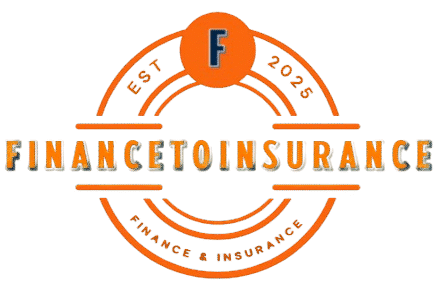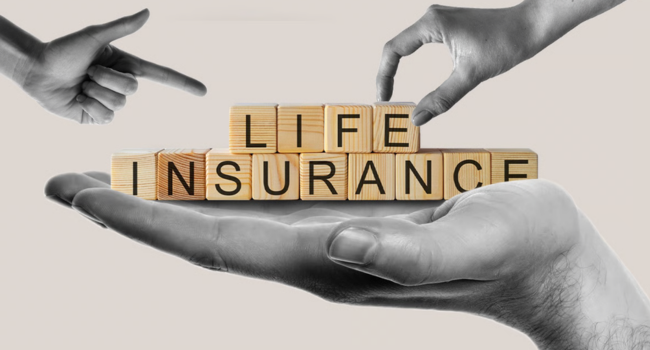Managing a business comes with its share of hazards, particularly when engaging with clients, customers, or the general populace. One of the most vital safeguards any entrepreneur should consider is Public Liability Insurance. This coverage can protect your business from the potentially crippling financial repercussions of facing lawsuits for injury or damage to property. Whether you run a café, oversee a construction company, or provide services at client locations, having this insurance can be the deciding factor between thriving and financial ruin in the event of a liability claim.
This all-encompassing guide will aid you in grasping what public liability insurance entails, its significance, who may need it, what it encompasses, what it excludes, and how to secure the most advantageous deal for your enterprise.
What Is Public Liability Insurance?
Public Liability Insurance is a category of business insurance that offers protection to companies and self-employed individuals in the event a third party (generally a customer, client, or member of the public) suffers an injury or property damage as a result of their business activities.
Example:
A customer slips on a wet floor in your store and hurts themselves.
A contractor accidentally damages a client’s property while executing a service.
In both instances, public liability insurance would cover legal fees and compensation payouts, preventing your business from incurring substantial out-of-pocket expenses.
Why Is Public Liability Insurance Important?
Public liability insurance is more than just a legal obligation—it’s a prudent investment in the safeguarding of small businesses. Here’s why:
- Legal Coverage
It encompasses the expenses of defending your business in court should someone initiate a lawsuit against you for injury or property damage. Legal fees can escalate into tens of thousands—even if you’re not to blame. - Reputation Management
A business that adeptly manages a liability incident—with sufficient insurance—demonstrates accountability and concern—enhancing customer trust. - Client Requirements
Numerous clients, particularly government or corporate entities, necessitate evidence of public liability insurance prior to engaging in business with you. - Peace of Mind
You can concentrate on growing your business, confident in the knowledge that you’re covered if an accident occurs.
Who Needs Public Liability Insurance?
If your business engages with the public in any capacity, you should seriously contemplate this kind of coverage. Illustrations include:
- Retailers and shop proprietors
- Builders and tradespeople
- Freelancers and consultants operating on-site
- Event coordinators
- Health and beauty practitioners
- Cafés, eateries, and food trucks
Even home-based ventures might require it if clients visit your residence or if you travel to client locations.
What Does Public Liability Insurance Cover?
Public liability insurance generally encompasses:
- Third-party Injury
Should a customer, supplier, or passersby be injured on your premises or as a result of your work, you’re protected for compensation and legal expenses. - Property Damage
It covers destruction to third-party property resulting from your business operations. - Legal Costs
Covers court fees, attorney expenses, and any settlements or judgments against your company. - Medical Costs
Some policies may include immediate medical treatment costs for injured third parties.

What Is Not Covered?
Public liability insurance has limitations. Typically, it does not encompass:
Employee injuries (covered by Workers’ Compensation)
- Professional negligence (requires Professional Indemnity Insurance)
- Product liability (unless expressly included)
- Deliberate or criminal acts
- Contractual obligations
- Damage to your own assets
Understanding these exclusions is crucial so that you can supplement with other forms of business insurance if necessary.
How Much Coverage Do You Need?
The required coverage level varies based on your industry, the scale of your business, and the extent of risk involved. Common coverage limits include:
- $1 million
- $2 million
- $5 million
- $10 million or more for high-risk industries
For instance, a freelance web designer operating from home might need less coverage than a construction firm engaged in large public projects.
Cost of Public Liability Insurance
Costs fluctuate based on various elements:
Factor Description
- Industry Higher-risk sectors (like construction) yield higher premiums.
- Business Size A larger workforce or more locations increases risk.
- Annual Revenue Elevated revenue typically translates to increased premiums.
- Claims History A clean record can lower premiums.
- Policy Limits Elevated limits = increased costs.
On average, small enterprises in low-risk sectors might pay $400–$1,000 annually, while high-risk businesses could incur costs in the thousands.
Tips to Reduce Premiums
Bundle Insurance Policies
Combine public liability with other insurance (e.g., general liability, property insurance) for discounts.
Increase Your Deductible
Opting for a higher deductible can reduce premium costs.
Maintain a Clean Claims History
Fewer claims often result in lower premiums over time.
Improve Safety Procedures
Insurers may offer discounts to businesses that show strong risk management practices.
Public Liability vs Other Business Insurance Types
Insurance Type What It Covers
Public Liability : Injury/property damage to third parties due to your business activities
Professional Indemnity: Losses from professional advice or services
Employers’ Liability: Claims by employees for work-related injuries
Product Liability: Damage or injury caused by products you sell
Commercial Property: Physical damage to your own business property
A complete small business protection plan often involves a mix of these policies.
Real-World Examples of Liability Claims
- Restaurant Slip-and-Fall
A customer in a restaurant slipped on a freshly mopped floor without a warning sign. The restaurant was liable for medical bills and legal costs. The insurance policy paid out $30,000. - Plumber Floods House
A plumber accidentally breaks a pipe, flooding a customer’s house. Damage totals $60,000. The plumber’s public liability insurance covers the repair and legal fees. - Exhibition Stand Collapse
At a trade fair, a booth collapses and injures several attendees. The business behind the stand faces multiple lawsuits. Insurance handles the defense and settlements totaling over $100,000.
How to Choose the Right Public Liability Insurance
- Assess Your Risks
List all the ways your business might cause harm to others. Tailor coverage accordingly. - Compare Providers
Get quotes from multiple insurers. Compare not just premiums, but policy limits, exclusions, and customer reviews. - Read the Fine Print
Understand exactly what is and isn’t covered. Pay attention to definitions, conditions, and exclusions. - Check for Industry Requirements
Some professions or trade associations may require specific minimum coverage amounts.

Frequently Asked Questions
Q1. Is public liability insurance mandatory?
In most countries, it’s not legally required, but some industries and clients demand it. In places like the UK, contractors may need it to operate legally on certain sites.
Q2. Can I be sued even if I did nothing wrong?
Yes. Anyone can file a lawsuit. Even if you’re not liable, defense costs can be expensive—and that’s what insurance helps cover.
Q3. How quickly can I get coverage?
Many insurers offer instant coverage online. It can be active within minutes of approval and payment.
Q4. Can I cancel anytime?
Yes, though cancellation terms vary. Some policies refund unused premiums; others charge administrative fees.
Public Liability Insurance Around the World
United States
Often combined with General Liability Insurance. Popular for small businesses and sole proprietors.
United Kingdom
Public liability is commonly required by clients and local councils. Policies often start at £1 million coverage.
Australia
Essential for tradespeople and service providers. Some states require it to operate certain licenses.
India
Becoming increasingly relevant with the rise of startups and small service providers. IRDAI regulates liability insurance offerings.
How to File a Claim
If something goes wrong:
Report the Incident Immediately – Inform your insurer ASAP.
Document Everything – Take photos, gather witness statements, keep receipts.
Cooperate with Insurers – Provide all requested documents.
Avoid Admissions – Don’t admit fault without legal consultation.
A well-prepared claim is processed faster and more favorably.
Conclusion
Public liability insurance is a crucial element of small business protection. In an increasingly litigious environment, having the right legal coverage can save your business from financial disaster. From minor mishaps to major claims, this policy stands as a shield against unexpected events that can otherwise destroy your hard-earned success.
Whether you’re a solo entrepreneur or manage a growing enterprise, securing public liability insurance is not just a precaution—it’s a smart investment in your business’s long-term stability.



